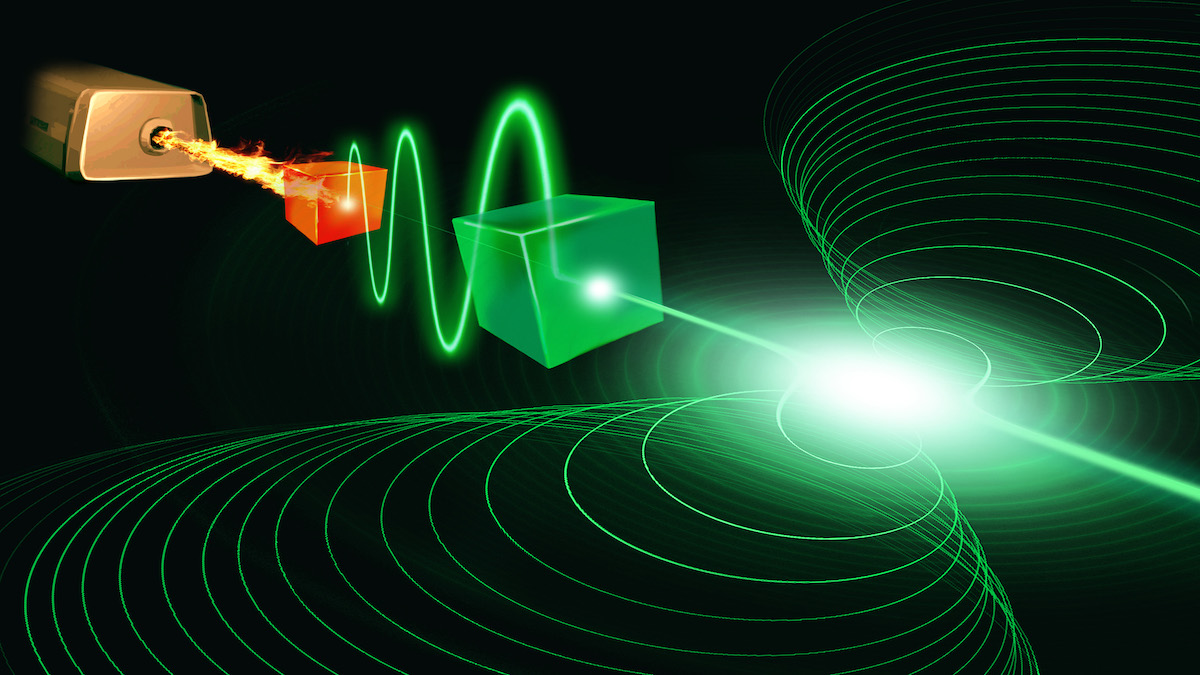Oct 28 2020
Quantum theorists from Australia have demonstrated how to break a restraint that had been regarded, for six decades, to restrict the coherence of lasers.
 Artist’s conception of a superconducting device which could realize a laser operating at the ultimate quantum limit. Image Credit: Ludmila Odintsova.
Artist’s conception of a superconducting device which could realize a laser operating at the ultimate quantum limit. Image Credit: Ludmila Odintsova.
A laser beam’s coherence can be considered as the number of photons (particles of light) discharged successively into the beam with the same phase (all waving collectively). It governs how well it can carry out an extensive range of precision tasks, like regulating all the components of a quantum computer.
At present, scientists from Griffith University and Macquarie University have demonstrated that new quantum technologies pave the way for making this coherence immensely huge compared to what was thought possible. The study findings have been reported in a paper published in the Nature Physics journal.
The conventional wisdom dates back to a famous 1958 paper by American physicists Arthur Schawlow and Charles Townes. They showed theoretically that the coherence of the beam cannot be greater than the square of the number of photons stored in the laser.
Howard Wiseman, Professor and Project Leader, Director, Centre for Quantum Dynamics, Griffith University
Both Schawlow and Townes were awarded a Nobel Prize for their work on lasers.
But they made assumptions about how energy is added to the laser and how it is released to form the beam. The assumptions made sense at the time, and still apply to most lasers today, but they are not required by quantum mechanics. In our paper, we have shown that the true limit imposed by quantum mechanics is that the coherence cannot be greater than the fourth power of the number of photons stored in the laser.
Dominic Berry, Associate Professor, Macquarie University
“When the stored number of photons is large, as is typically the case, our new upper bound is much bigger than the old one,” added Berry.
However, can this latest limit on coherence be achieved?
“Yes,” stated Dr. Nariman Saadatmand, who is a researcher in Professor Wiseman’s group.
By numerical simulation we have found a quantum mechanical model for a laser which achieves the theoretical upper bound for coherence, in a beam that is otherwise indistinguishable from that of a conventional laser.
Dr Nariman Saadatmand, Researcher, Centre for Quantum Dynamics, Griffith University
So, when will people get to observe these new super-lasers?
“Probably not for a while,” stated Mr. Travis Baker, a Ph.D. student on the project at Griffith University.
But we do prove that it would be possible to construct our truly quantum-limited laser using superconducting technology. This is the same technology used in the current best quantum computers, and our proposed device may have applications in that field.
Travis Baker, PhD Student, Griffith University
“Our work raises many interesting questions such as whether it could allow more energy-efficient lasers. That would also be a great benefit, so we hope to able to investigate that in the future,” concluded Wiseman.
Journal Reference:
Baker, T. J., et al. (2020) The Heisenberg limit for laser coherence. Nature Physics. doi.org/10.1038/s41567-020-01049-3.